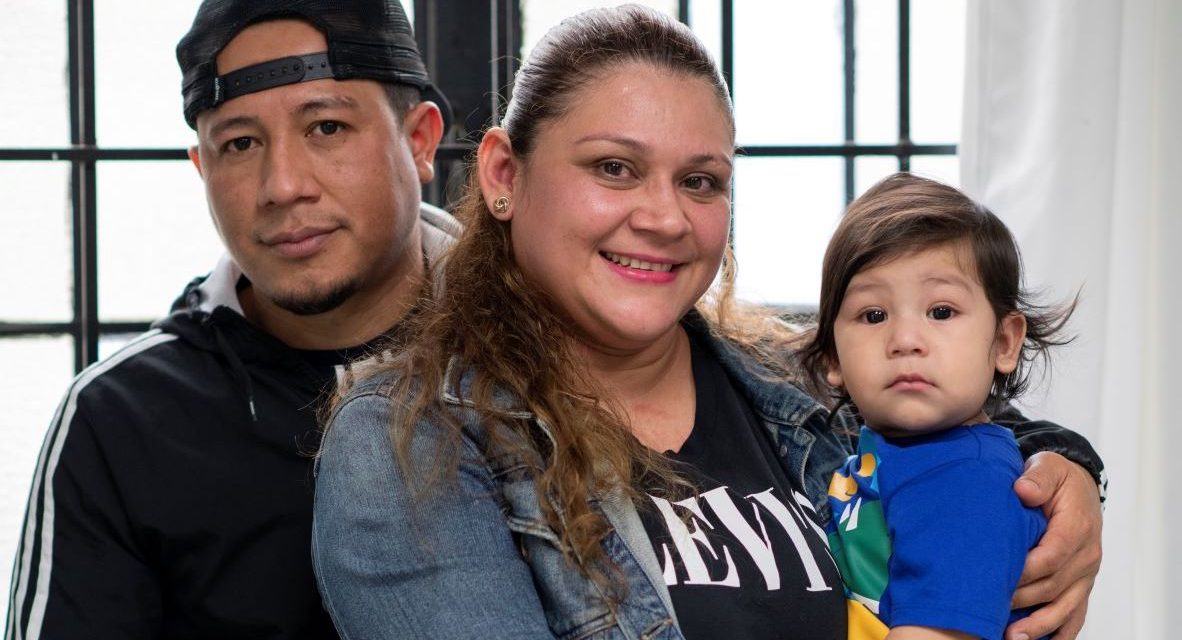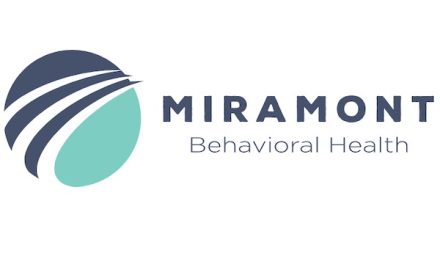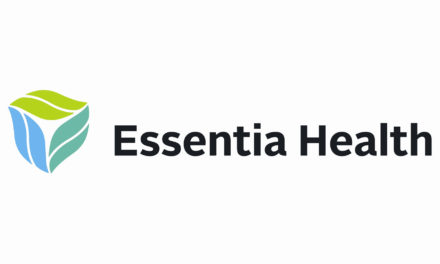
Milwaukee moms will soon receive first payments through unconditional cash program

Photo courtesy of Zilber Family Foundation and The Bridge Project
The inaugural participants of Milwaukee’s first unconditional cash program are expected to receive their payments starting next month.
The Zilber Family Foundation, a grantmaking institution in the city, and The Bridge Project, a New York effort to improve the socioeconomic mobility of families, announced the effort this spring.
They’re hoping to support family stability and community health by providing cash payments to 100 low-income, pregnant people in the Lindsay Heights, Clarke Square and Layton Boulevard West neighborhoods.
Foundation Executive Director Gina Stilp said the first 1,000 days of a baby’s brain development are critical to success later in life. They hope the payments help families maintain stable housing, which can lead to improved school performance, health outcomes and employment opportunities over the long term.
They also want to counter a narrative that those with lower income made bad decisions that perpetuate poverty. Low-income communities are doing a “phenomenal job,” but have limited resources, Stilp said.
“This is really putting a layer of dignity on top of assistance and allowing individual families to have the autonomy that many of us who have middle or higher incomes experience every day,” she said.
Stilp said Milwaukee has a robust network of support for pregnant individuals and families with young children. They’re putting together a resource guide, in part to help those who don’t get into the program.
Under the current two-year effort, moms will receive a one-time prenatal stipend of $1,250, followed by $750 each month for 15 months and $375 for the remaining nine months. The foundation plans to fundraise $450,000 to expand the program an additional year, so moms will receive an additional $375 over 12 more months.
The Zilber Family Foundation awarded about $1.6 million for the first two years of the program. The Bridge Project and its supporter, the Monarch Foundation, are covering administrative costs, which are about $250,000.
Vanessa Dor, research director at The Bridge Project, said their goal is to enroll as many people as possible in their efforts, given challenges posed by maternal mortality and the impact poverty has on children.
“It is an intervention that should target every single baby in poverty in the U.S.,” she said.
Stilp and Dor recently spoke to Wisconsin Health News about the program.
Edited excerpts from the interviews are below.
WHN: How did this effort come together?
Stilp: For the past 15 years, we’ve been funding in particular neighborhoods through a place-based investment strategy in Milwaukee and targeting neighborhoods where we have high levels of poverty and high levels of health inequity. For the past five years or so, we’ve been trying to hone in on the issues of affordable housing and economic development as our two pillars.
While we’ve seen a great uptake in terms of coordination among nonprofits and interventions directly into the neighborhoods that are helping families who are lower income, we had this thought in the back of our heads for years of what would happen if we paired some of our investments in nonprofits with direct assistance to families. During the pandemic, we saw the overwhelmingly positive impacts of the child tax credits and the reduction in poverty that was happening through those direct cash payments to families. It reignited our interest in finding a program or building a program in Milwaukee.
My team spent the better part of a year doing research on the 100 different models that we could find nationally that were doing some form of cash transfers to families. When we came across The Bridge Project, a couple of things stood out to us, and we got in touch with them … We had the initial intention of learning from them. After the course of a year of conversation, we put our heads together and said, ‘What if we just replicated Bridge in Milwaukee?’ They were eager to partner with us and do the first expansion outside of New York.
WHN: What do you expect the impact to be?
Stilp: The Bridge Project is really focused on ending childhood poverty, and their approach is investing early in the health of the baby. Let’s prevent instead of undo. We anticipate that the baby will have a healthier start, both physically and emotionally with the reduction of moms’ and families’ stress from not having to make as difficult decisions around their financial situation.
We’ve also seen in other cities that mental health is a huge improvement. Just knowing there’s a little cushion so that you can pay your bills or buy food or get to work helps moms sleep better and helps moms’ overall health improve. We see that most of the funding, while there’s no strings attached, is spent on basic needs. So it’s the things that all of us need to keep our families stable.
We also see an increase in moms working. Contrary to the narrative that if there’s cash assistance given to families that unemployment would increase, it actually allows mom the flexibility to increase her hours. A lot of that is tied to the assumption that she can afford child care, can afford transportation to get to and from work, or alternatively is able to take days off work — maybe before it would have resulted in just choosing not to be employed — because she has the extra cushion of the cash coming in.
WHN: What’s been the impact of Bridge’s work in New York?
Dors: Bridge started with a pilot in 2021 in New York City. And then from that one, in 2022, the program expanded in more neighborhoods in New York City. From 2023 to now, we are across New York state, not only New York City. Currently, we have more than 1,000 moms in New York. And speaking about impact, at Bridge, we also have a research component. Of course, we have previous literature. But for the U.S. specifically and for our cohorts in New York in particular, we have preliminary data that are very encouraging.
For example, we were able to see from our in-house research that providing cash to moms improved their food insecurity situation. Moms in the program were able to save during their time in the program. And we also realized that moms who started in the program living in transitional housing were able to move to a more permanent situation during the first year of involvement. We believe that those are really great impacts. That is definitely the goal of our intervention — that based on their specific needs, they can actually make the decision that best suits their situation.
Another interesting finding as well that we had in our New York cohorts is the long-term investment most are doing with their cash. For example, some of them use the cash to get a professional degree while they’re in the program. We have some moms graduating from nursing and medical assistant programs. This is just another way to show that they really do what we’re expecting them to do: use their cash to the best of their ability to achieve their aspiration based on their needs.
WHN: How does your approach compare to other cash-transfer programs?
Dor: We are one of the first cash programs to launch specifically targeting mothers and babies. Our program is a three-year long program. In general, other programs are shorter. We definitely start as well during pregnancy because we believe that starting to impact the baby in the womb is the most efficient way actually to provide a better start in life … By doing so during pregnancy, we are making sure that mother health and mother well-being are also improved.
WHN: What is needed to sustain this work over time?
Dors: We have a lot of policy effort and advocacy work as well. We definitely need partners. We definitely need people to understand and embrace that movement to support babies and moms in the first 1,000 days of life. Because we believe that by giving them that start in life, we are also impacting long-term social and economic situations. We definitely would like to have public partnership.
Stilp: We would love to be able to sustain it and make it more of a program than a pilot. The reality is it’s expensive, and $2.1 million is a lot of funding to be raising in tranches. We’re optimistic that we’ll find additional philanthropic supporters who are aligned with both our vision of economic empowerment and family child stability. I think there’s a lot of areas of interest that kind of coalesce on this opportunity.
But I think we realize that we also likely need some public assistance on this, if it were to be a long-term sustainable program. There would have to be policy changes that would be supportive of this. At this point, we are completely privately funded. We really see that as the opportunity for us to build our evidence and really demonstrate that the investment does not need to be as restrictive or as complicated as some other assistance programs are, that we can empower individual families to make choices with their resources that will benefit not only themselves, but their community and their ability to participate in the economy.
This article first appeared in the Wisconsin Health News daily email newsletter. Sign up for your free trial here.





